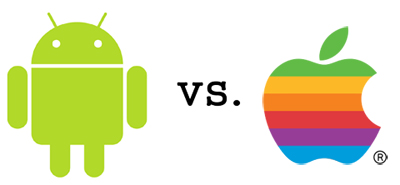Apple Inc. (NASDAQ:AAPL) is still the leader in profits from smartphone sales, according to recent analysis by International Data Corp, or IDC. Though Google Inc. (NASDAQ:GOOG) phones moved almost 800 million units in 2013 and there is no sign yet of the torrent of purchases slackening, these sales accounted for less than half the revenue generated by iPhones, which use the iOS mobile platform.
To some degree, of course, Apple’s (AAPL) iOS prospers simply because of its cache. Apple products are viewed as stylish and cutting edge, while those of other companies are perceived as stodgy, everyday workhorses at best or amateurish ripoffs at worst.
The company gained considerable mystique from the idiosyncratic personality of Steve Jobs, and maintains its aura today through secrecy and tantalizing hints of things to come. Apple, in short, has a “cult of personality” that any Android based competitor would be very hard put to match, giving it at least one advantage that it is likely to retain for the foreseeable future. The Street ascribes the firm’s fanatical base of followers to the groundbreaking release of the iPod in 2001 as well, creating a direct associative link between people’s favorite music (which has a profound emotional impact on the listener) and Apple.
 App developers greatly prefer iOS due to its lack of hardware fragmentation and solid, well-known implementation. Intriguingly, this means that one of the platform’s most appealing features is its long-term, established dependability – an ironic twist for the product of a company said to thrive on innovation. According to Business Insider, 69 percent of new project starts are based on iOS, and 31 percent on Android. Cold, hard cash is the main reason for this preference, with 76 percent of app revenue accruing to those apps made for iOS, and only 34 percent to Android. Due to lack of fragmentation, apps are easily discoverable by the entire available market, and development costs are held down also.
App developers greatly prefer iOS due to its lack of hardware fragmentation and solid, well-known implementation. Intriguingly, this means that one of the platform’s most appealing features is its long-term, established dependability – an ironic twist for the product of a company said to thrive on innovation. According to Business Insider, 69 percent of new project starts are based on iOS, and 31 percent on Android. Cold, hard cash is the main reason for this preference, with 76 percent of app revenue accruing to those apps made for iOS, and only 34 percent to Android. Due to lack of fragmentation, apps are easily discoverable by the entire available market, and development costs are held down also.
Something of a feedback loop is working to Apple’s (AAPL) advantage. 41 percent of iOS users earn more than $100,000 annually, while only 24 percent of Android users are paid as much. This means that apps on iOS are more likely to sell, since users have more disposable income. The wider availability of apps then continues to attract users with the resources to buy them, ensuring that an affluent customer base continues to support the Cupertino firm’s proprietary platform. On the other hand, Piper Jaffray research indicates that app quality is identical on both systems.
The strengths of Apple Inc. (AAPL) and the iOS also reveal its potential weaknesses, however. Younger possible customers will not have the same emotional resonance with the company that the iPod release in 2001 caused, instead taking mobile music players for granted. Steve Jobs is dead, removing his hypnotic persona from play. On the practical side, Google is working strongly to unify Android device capabilities, thus slashing fragmentation and making Android a much more appealing platform for app development.
It seems likely that iOS will retain its advantage for the near future, however, which is long enough for the purposes of most investors choosing a good place to put their money. The eventual release of a cheaper iPhone variant, and a suite of new “I”-branded products and services, will also give Apple Inc. (AAPL) the market power needed to stay at the top of revenues for some time to come. In the long run, however, there seems a good chance that Android will make a successful challenge to the California-based tech company’s mobile OS dominance.
For more Apple news follow PFhub on FaceBook, Twitter or bookmark this page.



